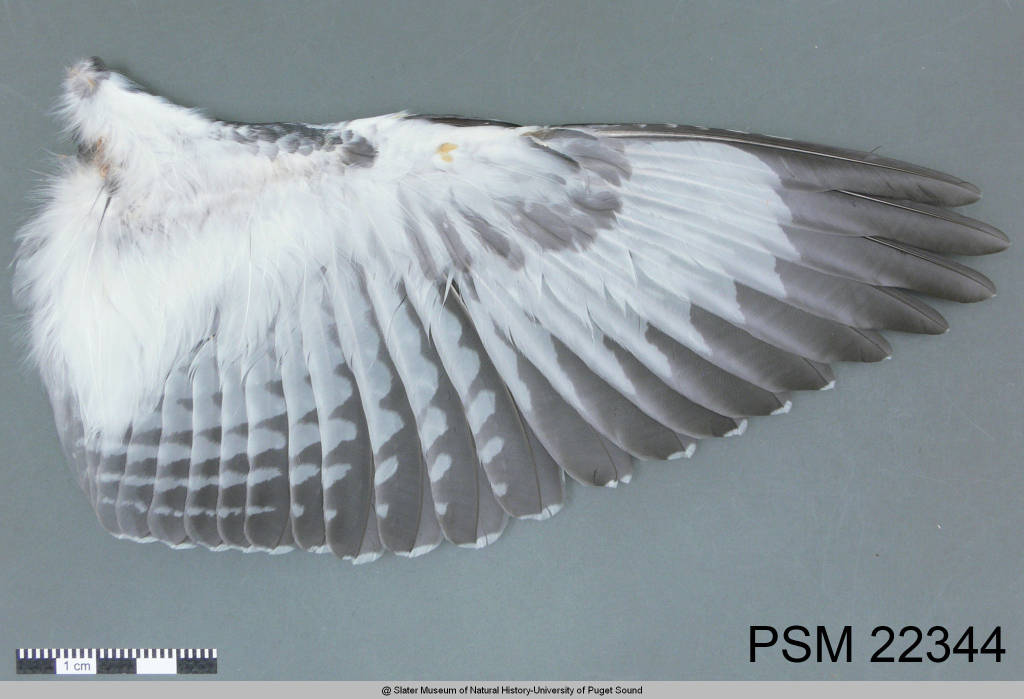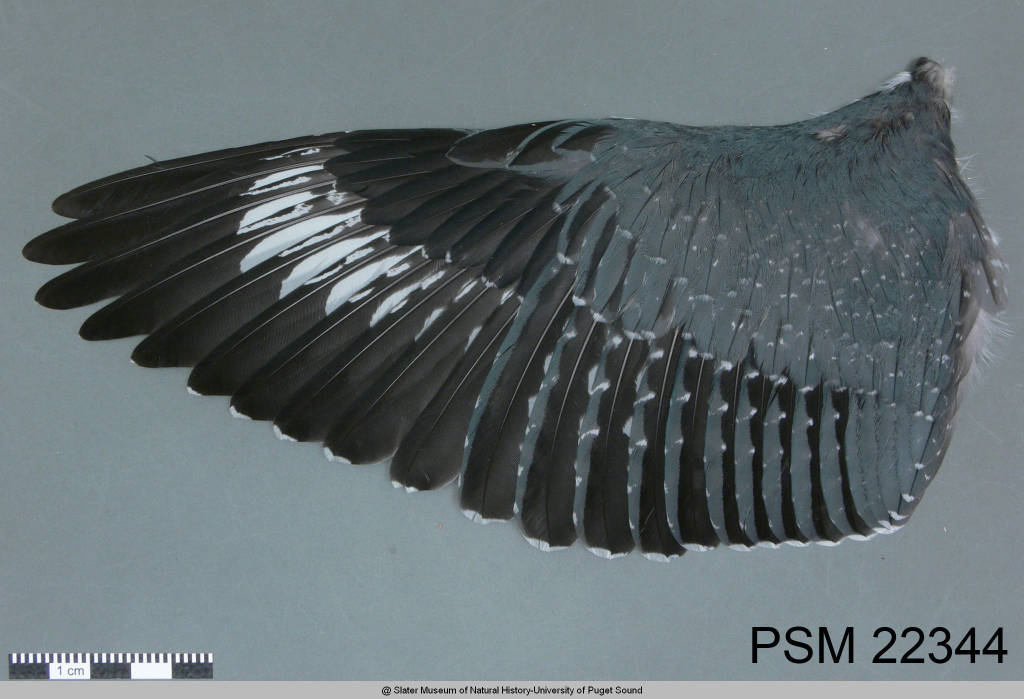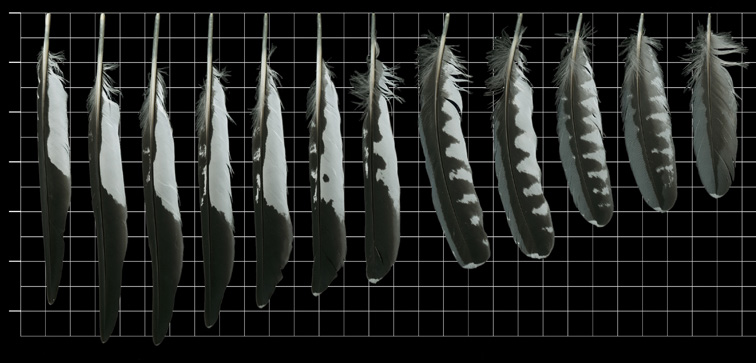Most birds have a very different pattern on the upperside and underside of their wings. On the coverts (the leading edge of the wing) this is easily explained because we are looking at entirely different feathers above and below. On the primaries and secondaries, however, there is just a single layer of feathers. How can they look so different?
With thanks to the online wing collection of the Slater Museum of Natural History, University of Puget Sound for allowing the use of these photos.

There is a slight difference in color between the upper and under surface of each feather, as a rule they are darker above and paler below. Turkey Vulture is a good example of this, with wing feathers that are dark blackish-brown above and pale silvery gray below.
A more important point of difference is the fact that from below we see mainly the inner webs of the feathers, and from above mainly the outer webs. The feathers are stacked up, and slide across each other like certain folding fans. Comparing the upper and underside of these Belted Kingfisher wings, you can see that the white patch visible on the upper surface at the base of the outer primaries is only the edge of a much larger white patch on the inner webs of those feathers. Therefore, when viewing from below we see mainly the white parts of the feathers, and from above we see mainly the dark parts of the feathers.


Feathers image from the US Fish and Wildlife Service Feather Atlas project

